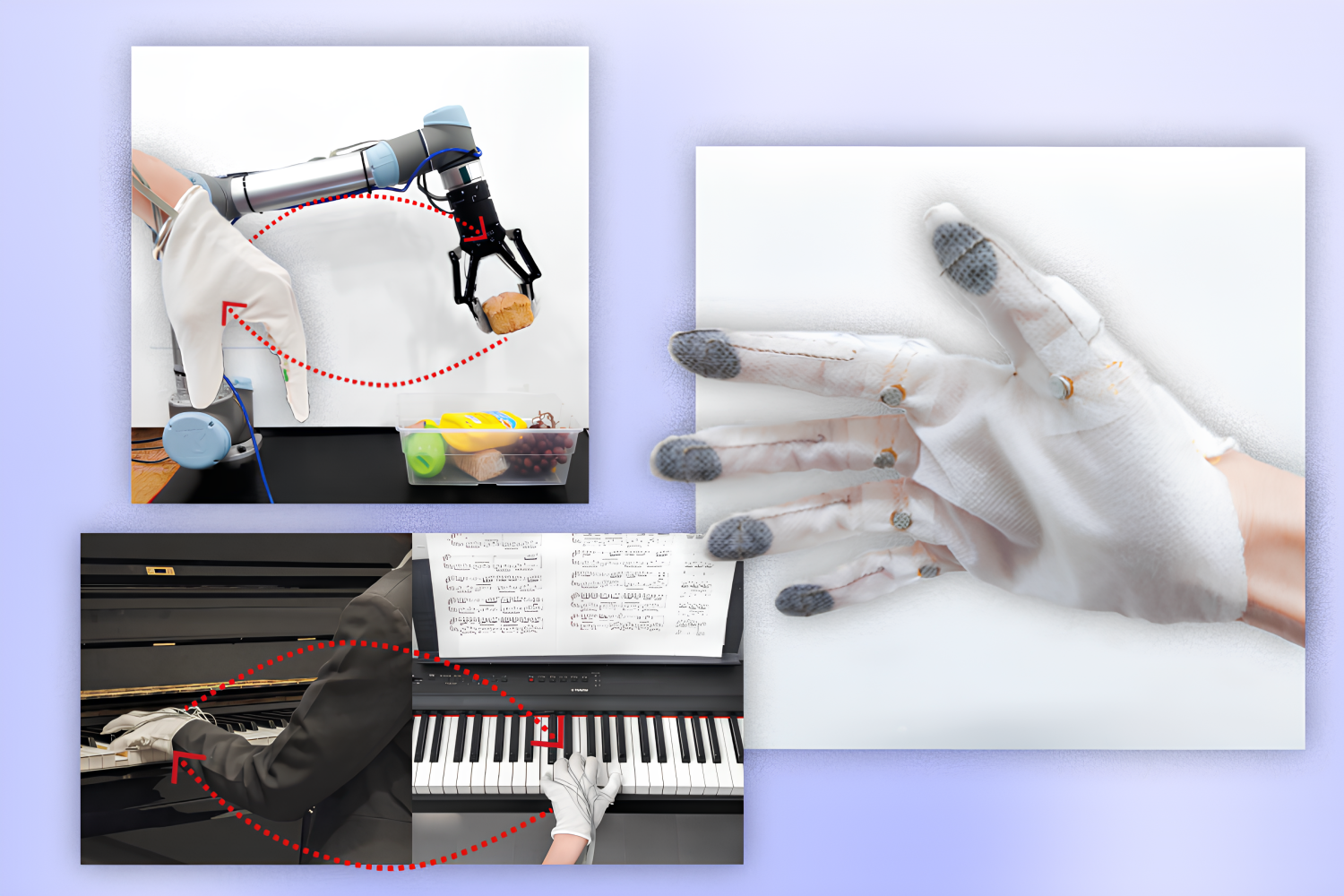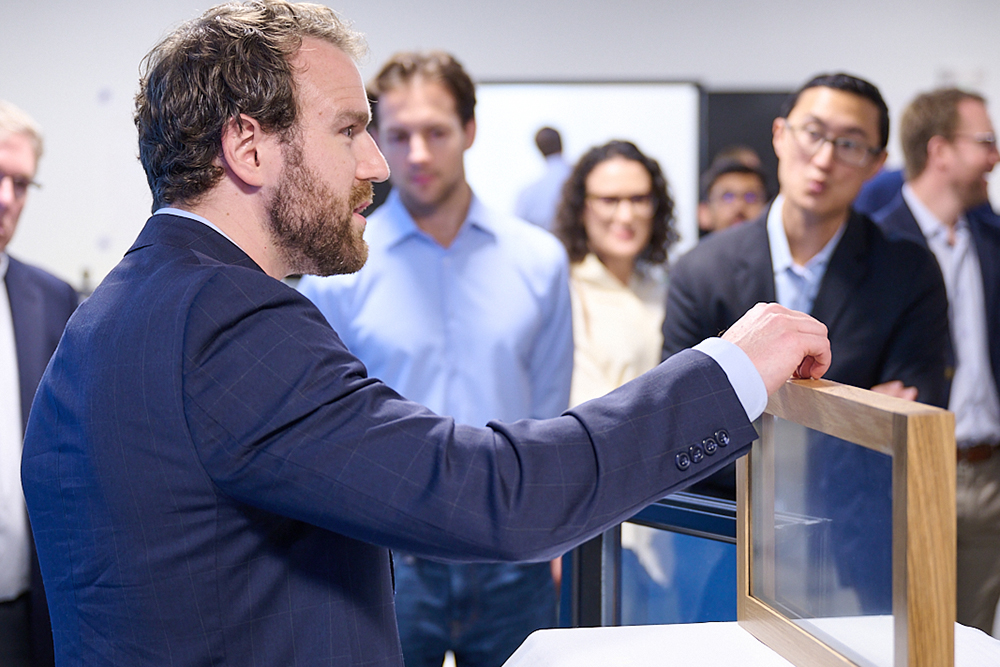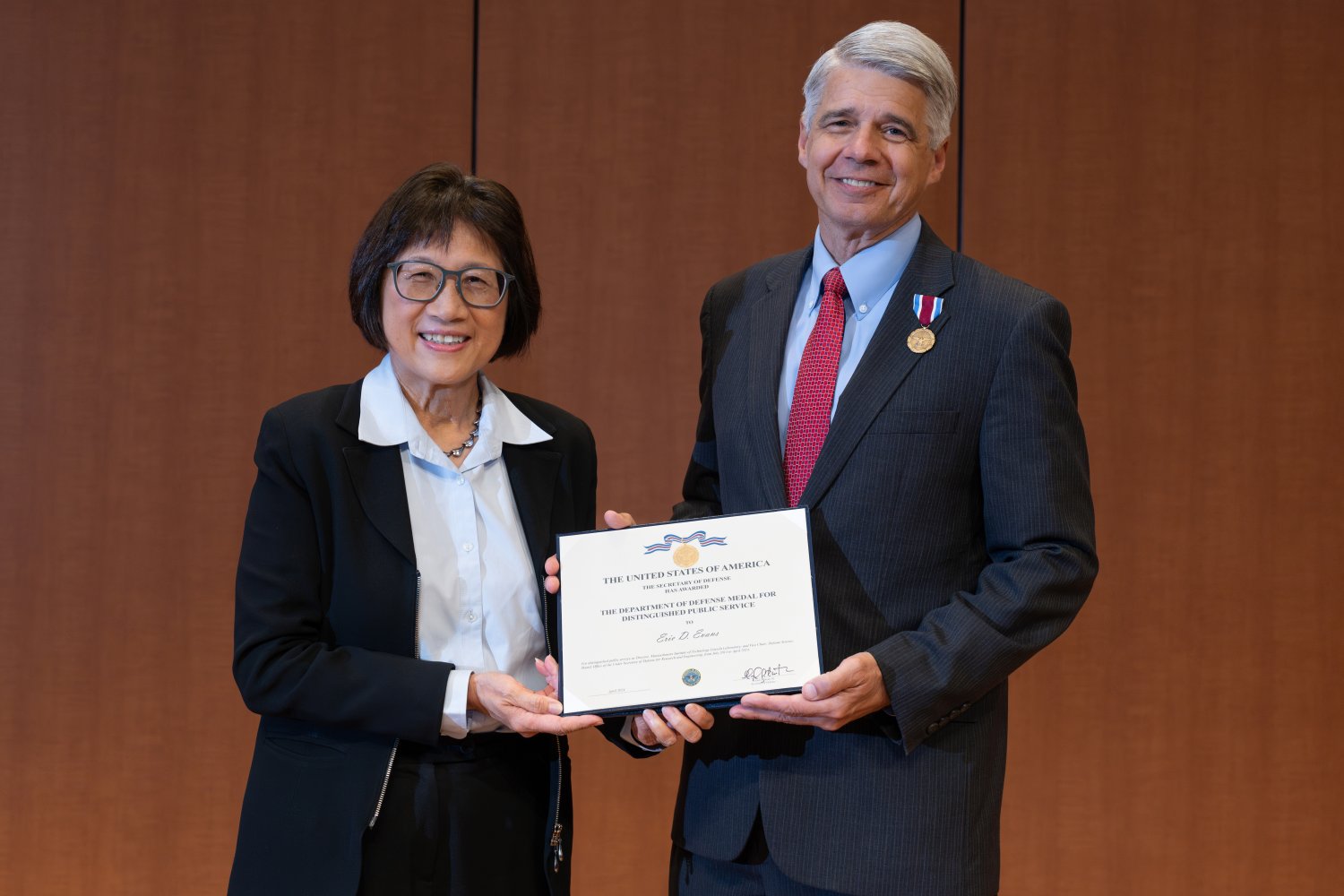While many people identify as visual or auditory learners, others acquire knowledge through touch. This tactile understanding is particularly crucial in fields such as surgery and music, where precise movements play a vital role. Unfortunately, unlike audio and video, capturing and sharing tactile experiences can be quite challenging.
Addressing this issue, researchers from MIT’s Computer Science and Artificial Intelligence Laboratory (CSAIL) have developed an innovative embroidered smart glove. This groundbreaking device can capture, reproduce, and convey touch-based instructions effectively. Moreover, the researchers designed a user-friendly machine-learning agent that customizes tactile feedback based on individual responses, enhancing the overall user experience. This cutting-edge system presents exciting possibilities for teaching physical skills, enabling advanced robot teleoperation, and innovating virtual reality training.
An open-access study detailing this research was published in Nature Communications on January 29.
Can This Glove Help Me Play the Piano?
To bring the smart glove to life, the research team utilized a digital embroidery machine to intricately weave tactile sensors and haptic actuators into fabric. This technology mirrors the haptic feedback found in smartphones: when you tap an app on your screen, you receive a subtle vibration. Similarly, the smart glove sends targeted feedback to different finger areas, guiding users through various tasks.
For instance, imagine learning to play the piano. An expert musician recorded a simple melody while wearing the glove, capturing the precise finger movements used on the keys. The machine-learning agent then translated this sequence into haptic feedback, which was transmitted to the gloves worn by students. As the students’ fingers hovered above the corresponding keys, the glove vibrated, instructing them on the optimal finger movements. This personalized feedback is tailored to each user, acknowledging the unique nature of tactile experiences.
“Humans perform countless tasks by interacting with our environment,” explains Yiyue Luo MS ’20, the paper’s lead author and a PhD student in MIT’s Department of Electrical Engineering and Computer Science (EECS). “We typically learn through observation, such as watching someone play the piano or dance.”
“The difficulty lies in the fact that we all perceive haptic feedback differently,” Luo continues. “This challenge drove us to create a machine-learning agent that generates individualized haptic responses, fostering a hands-on learning approach.”
The smart glove is crafted to fit each user’s hand perfectly using advanced digital fabrication techniques. A computer generates a cutout based on specific hand measurements, followed by an embroidery machine stitching in the sensors and actuators. Remarkably, this process takes only 10 minutes. Initially trained on the haptic feedback of 12 users, the glove’s adaptive machine-learning model requires just 15 seconds of additional data from new users to tailor its feedback.
In further experiments, participants used the gloves while playing laptop games that involved tactile feedback. In a rhythm-based game, players learned to navigate a narrow path to score, while in a racing game, drivers collected coins and balanced their vehicles. The research team found that participants achieved their highest scores with optimized haptic responses compared to scenarios without any feedback.
“This research represents the initial phase of developing personalized AI agents that gather data about both the user and their surroundings,” notes senior author Wojciech Matusik, an MIT professor and head of CSAIL’s Computational Design and Fabrication Group. “These agents will assist users in mastering complex tasks and cultivating better skills.”
Enhancing Virtual Reality and Robotic Teleoperation
In robotic teleoperation tasks, the researchers found that their smart gloves could relay tactile sensations to robotic arms, enabling them to perform delicate grasping operations. “It’s akin to teaching a robot to behave like a human,” Luo observes. In one experiment, human teleoperators guided a robot in grasping various types of bread without crushing them. This method enables precise control over robotic systems in environments like manufacturing, where collaboration with human operators is essential for safety and efficiency.
“The technology behind the embroidered smart glove marks a significant advancement in robotics,” says Daniela Rus, MIT professor and CSAIL director. “With its high-resolution tactile feedback capability, this sensor allows robots to engage with their environment by ‘feeling’ much like human skin. The seamless integration of tactile sensors into textiles bridges the gap between physical actions and digital feedback, unlocking vast potential for responsive robot teleoperation and immersive virtual reality training.”
The gloves could also enhance the immersive experience in virtual reality settings. Gamers using smart gloves would experience tactile sensations in digital environments, allowing them to navigate obstacles more effectively. Likewise, the technology could provide a specialized touch experience in training simulations for professions such as surgery, firefighting, and aviation, where precision is crucial.
While the current application focuses on hand movements, Luo and her team envision extending the technology to guide other body parts with enhanced haptic feedback. With a more sophisticated AI agent, their system could eventually facilitate more complex tasks, such as shaping clay or piloting an aircraft. Presently, the technology specializes in simpler movements like pressing keys and grasping objects. Future developments may incorporate more user data and create more ergonomically designed wearables to optimize hand movement impacts on tactile perceptions.
Alongside Luo and Matusik, the paper’s authors include Tomás Palacios, EECS Microsystems Technology Laboratories Director, and CSAIL researchers Chao Liu, Young Joong Lee, Joseph DelPreto, Michael Foshey, and Antonio Torralba, as well as Kiu Wu from LightSpeed Studios and Yunzhu Li from the University of Illinois at Urbana-Champaign.
This research received support from the MIT Schwarzman College of Computing Fellowship via Google, a GIST-MIT Research Collaboration grant, and contributions from Wistron, the Toyota Research Institute, and Ericsson.
Photo credit & article inspired by: Massachusetts Institute of Technology



